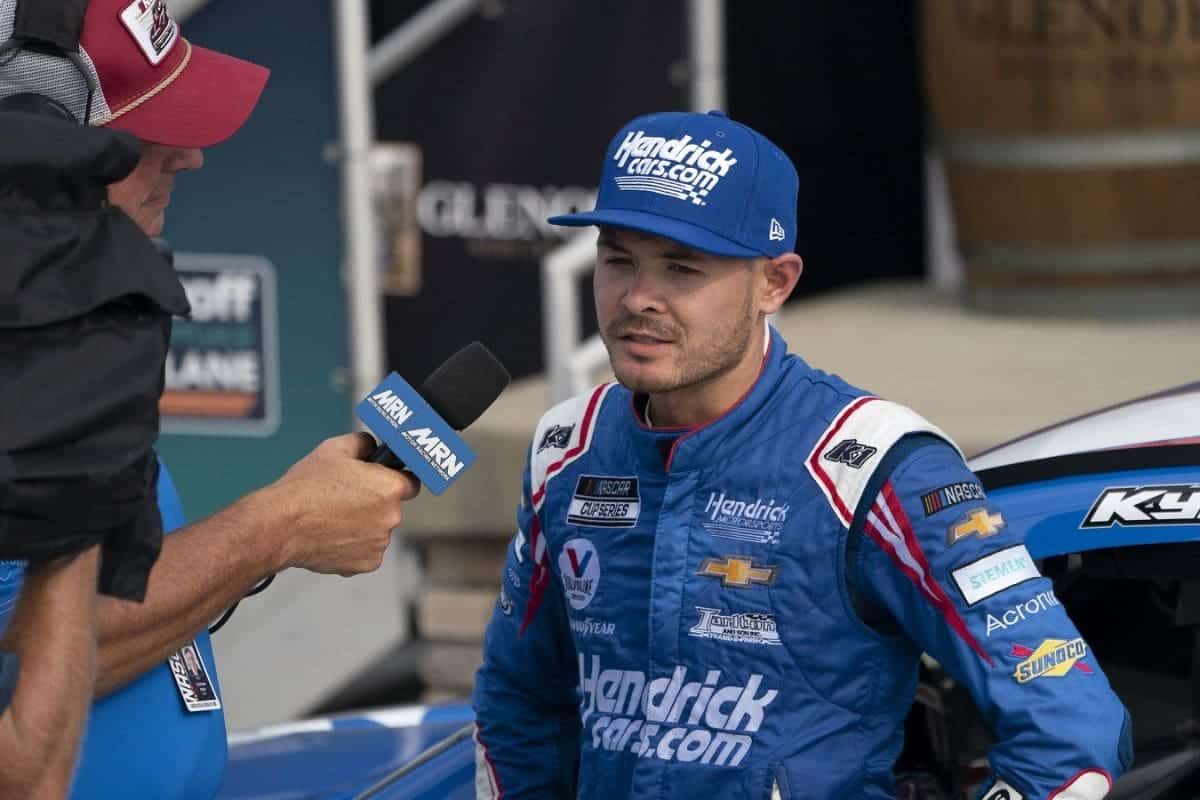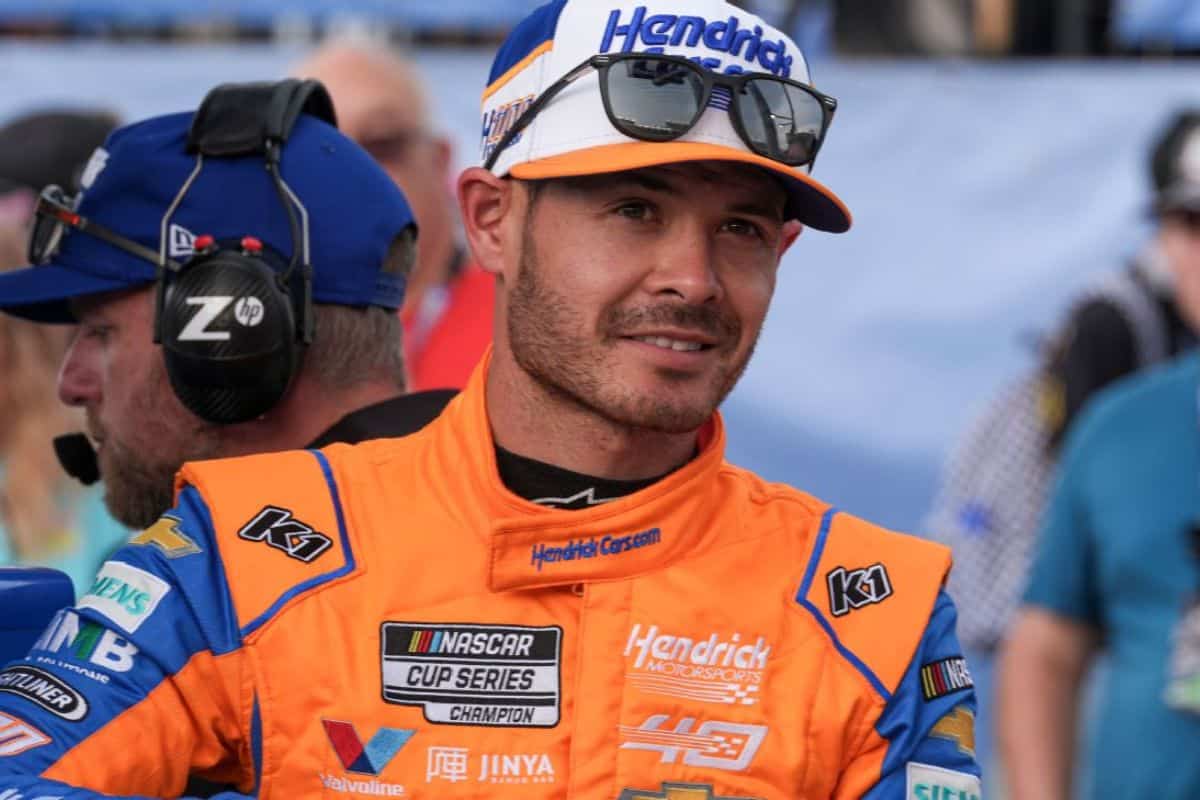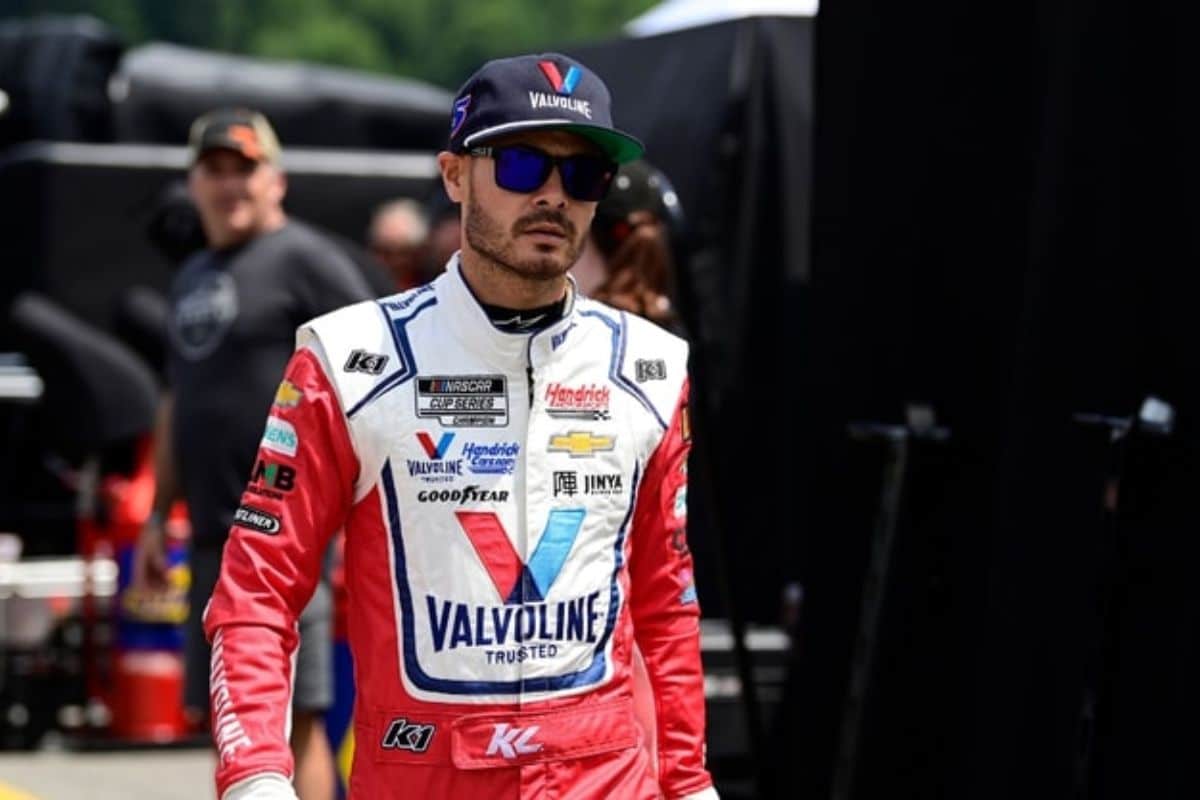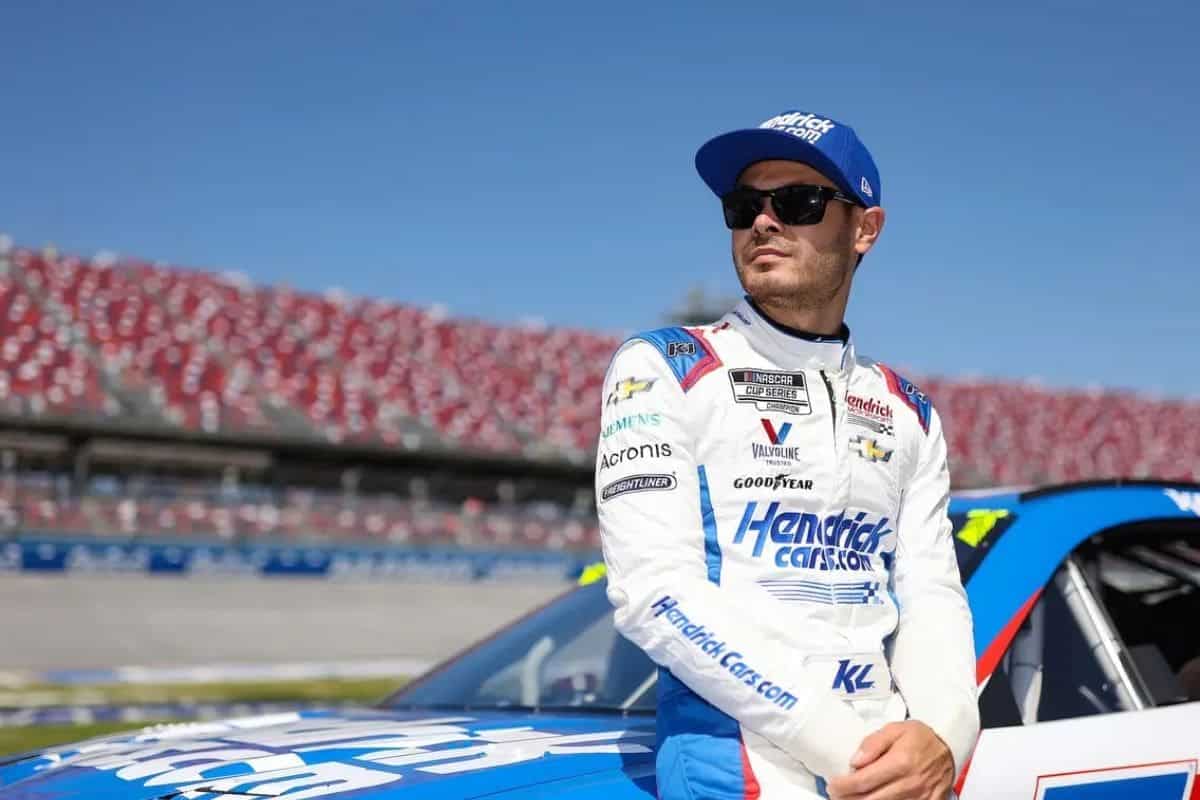Kyle Larson’s Controversial Take on NASCAR: Kyle Larson‘s recent comments regarding Bristol Motor Speedway have sparked a notable debate within the NASCAR community. Despite his solid performances on this notoriously difficult track, Larson has suggested that NASCAR should limit Bristol to hosting only one race per season, citing the extreme challenges it presents to drivers. This perspective not only raises questions about the balance between maintaining tradition and ensuring fair competition but also invites a broader discussion on how NASCAR schedules its races. As the sport continually evolves, Larson’s viewpoint could have significant implications for future race planning and driver satisfaction. What are the potential impacts of such a scheduling change on the sport?
Key Highlights
- Kyle Larson criticized the scheduling of NASCAR races at Bristol, arguing it should only host one race per season.
- Larson finds Bristol’s unique challenges and track conditions demanding, impacting tire performance and race strategy.
- Despite his critique, Larson performed commendably in the recent Food City 500 at Bristol.
- Larson’s feedback on Bristol contributes to discussions on improving NASCAR track scheduling and race integrity.
- Larson’s stance emphasizes the need for optimizing NASCAR schedules to balance competition and fan engagement.
Kyle Larson’s Controversial Opinion on Bristol Motor Speedway
During a recent interview on the Black Flag Matter podcast, Kyle Larson sparked debate by openly criticizing the decision to schedule NASCAR races at Bristol Motor Speedway. Larson’s remarks focused on the unique challenges posed by the 0.533-mile short oval, a track that has long been a subject of both admiration and criticism within the racing community.
Larson shared his discomfort with Bristol, contrasting it with other circuits on the NASCAR schedule where he feels more at ease. The notable difficulty of Bristol lies in its steep banking and tight turns, which demand exceptional precision and control from drivers. Larson’s critique was rooted not in the track’s design per se, but in the heightened level of difficulty and unpredictability it introduces, even for seasoned professionals.
The 2014 NASCAR Rookie of the Year highlighted the physical and mental strain that Bristol imposes, suggesting that the track’s demanding nature can sometimes overshadow the skill and strategy that define competitive racing. While some fans and fellow drivers appreciate the excitement and spectacle Bristol provides, Larson’s perspective raises valid points about the balance between challenge and fairness in NASCAR’s scheduling decisions.
His comments also highlight the broader debate about track diversity in NASCAR. With a schedule that includes a mix of ovals, road courses, and superspeedways, each venue offers unique characteristics that test different aspects of a driver’s abilities. Larson’s critique of Bristol is a reminder of the ongoing conversation about how to best balance these elements to ensure a competitive and enjoyable racing experience.

NASCAR’s Track Scheduling and Recent Developments
NASCAR’s track scheduling has been a hot topic of debate, particularly with recent developments like the introduction of the NextGen car and upgraded short-track packages. These innovations have sparked discussions within the NASCAR community about optimizing the race calendar to improve competition and fan engagement.
Tracks such as Daytona International Speedway, Talladega Superspeedway, Martinsville Speedway, Richmond Raceway, Atlanta Motor Speedway, and Bristol Motor Speedway each host two Cup Series races annually. This tradition has faced scrutiny as stakeholders consider the potential benefits of reducing some venues to a single race per season.
The NextGen car, designed to create a more level playing field and improve racing dynamics, has influenced how tracks are perceived with regards to their capacity to deliver thrilling competitions. Coupled with upgraded short-track packages and new Goodyear tire compounds, these advancements have provided a fresh perspective on which tracks may best demonstrate the evolving capabilities of the vehicles and the skill of the drivers.
Moreover, optimizing the schedule to feature a more diverse array of tracks could potentially enrich the overall appeal of the series. By ensuring that each race is distinct and memorable, NASCAR could maintain high levels of fan interest and attendance. This approach might also allow for a more strategic distribution of events across different regions, increasing local economies and expanding the sport’s footprint.
Larson’s Firm Stance Against Bristol Hosting Two Races
Kyle Larson recently made headlines with his unequivocal stance that Bristol Motor Speedway should be reduced to hosting only one race per NASCAR season.
When interviewed by Darian Gilliam, Larson did not mince words, expressing firmly that Bristol, unlike other tracks, should no longer feature twice in the annual NASCAR calendar. This perspective stems from Larson’s recent experiences and personal preferences regarding the racing dynamics at Bristol.
Despite his firm opinion, Larson’s performance at the latest Bristol race remains commendable. Starting from the tenth position on the grid, he secured a respectable fifth-place finish, highlighting his capability to navigate the complexities of this challenging track. Nevertheless, his assertion suggests that the demanding nature of Bristol may not warrant the allocation of two races per season.
Any one that has 2 dates except for Bristol 😬 https://t.co/8WpBJvo6kt
— Kyle Larson (@KyleLarsonRacin) June 21, 2024
Denny Hamlin’s victory in the most recent Bristol race added another layer to the discourse. As Hamlin of Joe Gibbs Racing clinched the win, it showed the competitive spirit and unpredictability that Bristol is known for. Yet, Larson’s stance suggests that perhaps such intensity might be better concentrated into a single, highly-anticipated race rather than being spread across two events.
Larson’s viewpoint opens a broader conversation about the strategic scheduling of NASCAR races and the potential benefits of reducing redundancy in the race calendar. It raises pertinent questions about track selection and the balance between maintaining tradition and adapting to the evolving preferences of drivers and fans. While Larson’s opinion may be divisive, it undeniably contributes to the ongoing dialogue about optimizing the NASCAR experience.

Challenges Faced During the Bristol Race
The recent Food City 500 at Bristol Motor Speedway highlighted the formidable challenges that drivers face, especially with tire management and strategic complexities on the concrete track. This 500-lap race demands not only technical skill but also tactical expertise to navigate the severe tire wear conditions inherent to Bristol’s unique surface.
Concrete tracks, unlike their asphalt counterparts, tend to exacerbate tire degradation. As drivers push their vehicles to the limit, maintaining peak tire performance becomes a critical component of their strategy. The Food City 500 was no exception, with teams carefully planning pit stops and adjustments to counteract the rapid wear. Drivers had to remain vigilant, managing their tires while simultaneously vying for position in a highly competitive field.
During the race, Kyle Larson experienced firsthand the punishing nature of Bristol’s track. After a strong start, he faced a significant setback due to a penalty that relegated him to the rear of the pack during a restart on Lap 323. Yet, Larson displayed resilience by clawing his way back, emphasizing the relentless effort required to succeed at Bristol. His path throughout the race illustrated the multifaceted challenges drivers encounter, from precise tire management to the execution of recovery strategies under demand.
The complexity of racing at Bristol extends beyond individual laps; it involves an intricate dance of speed, strategy, and endurance. Each driver must balance aggressive racing with prudent tire conservation, all while contending with the ever-present risk of incidents on the tight, high-banked turns. These elements combine to make Bristol one of NASCAR’s most demanding tracks, testing the limits of both man and machine.
Kyle Larson’s Post-Race Reflection and Current Standings
After the Bristol race, Larson openly expressed his reservations about the track’s demanding conditions and the implications for tire performance. He voiced his concerns during a conversation with Noah Lewis on YouTube, highlighting the significant tire degradation and strategic challenges that the race conditions imposed. Larson emphasized that racing under such strenuous conditions on a weekly basis would be far from ideal, cautioning that it could cast a negative light on Goodyear due to the notable tire issues witnessed during the event.
Larson’s reflections post-race showed the broader challenges drivers face at tracks like Bristol. The high levels of tire wear not only demand exceptional driving skill but also place a premium on strategic planning and pit-stop execution. This combination of factors adds a layer of complexity that can be both thrilling and frustrating for drivers and teams alike. While some may enjoy the challenge, Larson’s comments suggest a preference for more balanced conditions that allow for consistent performance and safety.
https://en.wikipedia.org/wiki/Oval_track_racing#:~:text=Oval%20track%20racing%20is%20a,is%20almost%20universally%20counter%2Dclockwise.
Currently, Kyle Larson holds the runner-up position in the NASCAR Cup Series standings, trailing his Hendrick Motorsports teammate Chase Elliott by a mere eight points. This close margin highlights the competitive nature of the series and the fine line between success and setback. Larson’s consistent performance throughout the season has positioned him as a formidable contender, yet the issues at Bristol serve as a reminder of the unpredictable nature of the sport.
His honest feedback on track conditions and tire performance reflects a commitment to both his personal success and the overall integrity of NASCAR racing.

News in Brief: Kyle Larson’s Controversial Take on NASCAR
Kyle Larson’s critique of Bristol Motor Speedway highlights significant considerations for NASCAR’s race scheduling. His advocacy for reducing Bristol events to one annually emphasizes the unique challenges this track presents to drivers and the potential benefits of re-evaluating race frequency.
Larson’s perspective contributes to broader discussions aimed at enhancing the competitive integrity and general experience of NASCAR racing. As debates continue, Larson’s insights offer valuable input for optimizing the sport’s future.
Our Reader’s Queries
Q. Why did Kyle Larson crash?
A. Larson’s race took a dramatic turn when he was spun by Daniel Suárez, leading to significant contact in front of Denny Hamlin before ultimately being turned into the wall.
Q. What kind of racing does Kyle Larson do?
A. Larson secured victories in the NASCAR All-Star Race in 2019, 2021, and 2023. He also claimed Sunoco Rookie of the Year accolades in 2014, following his previous win of the same award in the NASCAR Xfinity Series in 2013. Larson boasts 15 career wins in the Xfinity Series and has notched three victories in the NASCAR Craftsman Truck Series.
Q. Who owns Kyle Larson’s late model?
A. At 31 years old, Larson has decided to step back from Dirt Late Model racing for the remainder of the season. He recently communicated to car owner Kevin Rumley that he needed a break from the Late Model circuit to reduce his race schedule for now.
ALSO READ: Kyle Larson and NASCAR’s Horsepower Debate

